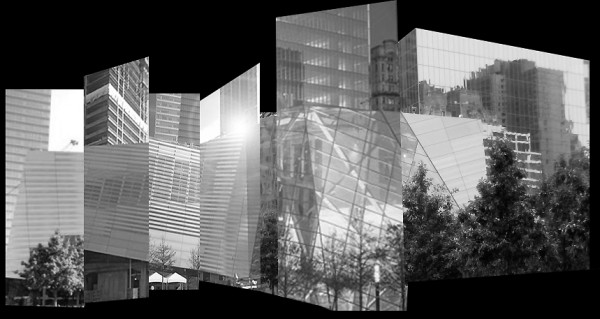Submitted by WA Contents
Invisible Cities – The Last Remnant of Modernism
United Kingdom Architecture News - Oct 24, 2014 - 11:39 5359 views

Model of National September 11 Memorial Museum Pavilion. Image courtesy Snohetta.
Following on from our special issue on the elements of architecture (AR135–Elements), online editorial assistant, Annabel Koeck, takes a look at curtain wall. Annabel is an Australian graduate architect currently working in London.
Norwegian architects Snøhetta, based between Oslo and New York designed the glass structure for the The National September 11 Memorial entry pavilion, which appears camouflaged against the backdrop of neighbouring glass curtain walls that define the New York skyline. Admittedly, Snøhetta’s pavilion was conceived by a very different brief, one defined by timidity and subtlety; yet paradoxically it was the curtain wall that facilitated this. Looking over the South Pool towards an array of glazed elevations that dominate the skyline it is ironic that a Modernist technique – the curtain wall – could now spell the end for architectural diversity in cities.
Snøhetta’s pavilion was designed as a safe threshold between the security of everyday life and the emotional memorial below ground. The brief required the provision of a ‘non-confrontational’ museum entry, and so the oblique curtain wall envelope – disguising the building’s mass and aesthetic identity – enabled Snøhetta to create a pavillion removed from sculptural form-making and instead dedicated to the unseen. The facade, entirely isolated from internal spatial organisation, encloses an auditorium, ticket booths, MEP facilities, family rooms, and a central ramp to the main museum below.....Continue Reading
> via Australian Design Review